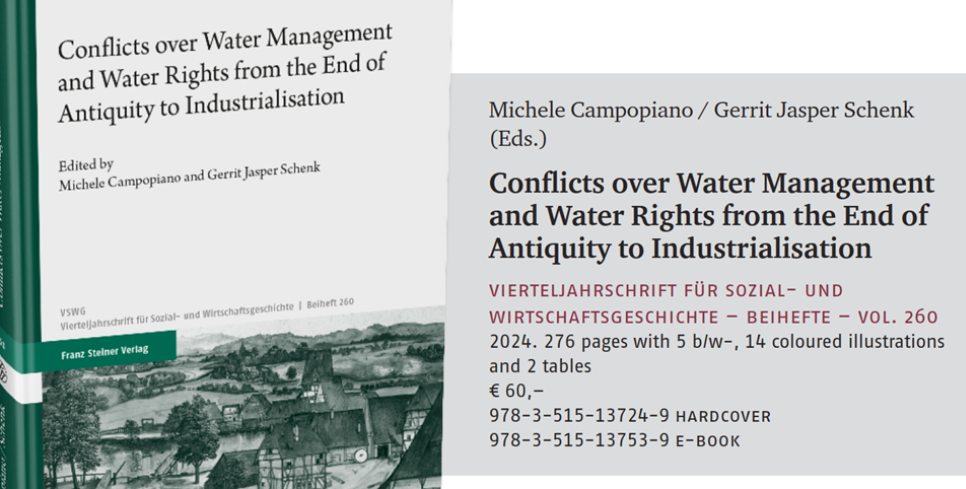New Release: Publication on Water Rights and Water Conflicts
Edited by Michele Campopiano and Gerrit Jasper Schenk
2024/08/19 by Nicolai Hillmus und Anita Schilz
Water is one of our planet's key resources: we drink it, we use it for irrigation or as a means of transport. However, this important resource can also put us in great danger, as shown in the most recent flood disasters of this year's June floods in Bavaria or the flood disaster in the Ahr valley in 2021, just three years ago.

The 12 articles in the volume ‘Conflicts over Water Management and Water Rights from the End of Antiquity to Industrialisation’, edited by Michele Campopiano and Gerrit Jasper Schenk show how humans have tried to control this resource over the last two millennia.
Using the results of the second international conference at Lorsch Abbey in 2019 a total of 11 researchers are investigating this question by analysing various examples ranging from fishing conflicts in Upper Lusatia to medieval irrigation systems in southwest China.
In one of these contributions, G. J. Schenk examines the development of the Weschnitz river from the eighth to the 18th century, focussing on the emergence of a fluvial anthroposphere, i.e. the development of man as the dominant shaping factor of his environment and the surrounding river landscape.
In doing so, he finds the Lorsch monastery, the local sovereigns and the towns along the Bergstrasse as the key players in the region. He can also observe peak phases of human influence in the increasing regulation and intervention in the water landscape since late antiquity in the Carolingian period and in the transitional phase to the early modern period between the 15th and 16th centuries.
The task of the ongoing DFG-funded project ‘The Weschnitz river landscape and its interaction with Lorsch Abbey’ is now to deepen and expand these findings on an interdisciplinary basis.
